International Single
Single Herbal Products

Aloe Vera
The medicinal use of aloe was already mentioned more than 4000 years ago in a collection of Sumerian clay tablets dated 2100 BC. Aloe was also mentioned as a laxative in the Egyptian Papyrus Ebers from 1552 BC.

Amalaki
Amalaki is highly valued by nutritionists and Ayurvedic practitioners alike. For those of you who haven’t heard about Ayurveda, it’s a 5000 year old natural healing system of medicine that is indigenous to India.
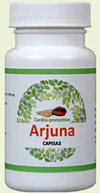
Arjuna
Arjuna was introduced into Ayurveda as a treatment for heart disease by Vagbhata (7th century CE). The bark of the Arjuna tree has a long history of use as a cardiac tonic as well, and has been indicated in the treatment of coronary artery disease, heart failure, hypercholesterolemia and for relief of Angina pain.
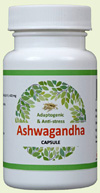
Ashwagandha
Among of all the medicinal plants used in India by old tradition of Ayurveda, Ashwagandha is the most highly prized. Use of the Ashwagandha root can be traced back as far as 3,000 years. Ashwagandha is classified as a rasayan, a rejuvenating or life extending agent.
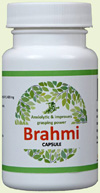
Brahmi
Bacopa is an important medicinal herb used in Ayurveda, where it is also known as "Brahmi" after Brahma, the creator God of the Hindu pantheon. Brahmi was initially described around the 6th century A.D. in texts such as the Charaka Samhita, Atharva-Veda, and Susrut Samhita as a medhya rasayana–class herb taken to sharpen intellect and attenuate mental deficit.
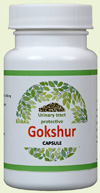
Gokshura
In Ayurvedic pharmacology, Tribulus terrestris is used as a powder form of the aerial parts, particularly the fruits and it is known in Sanskrit as ‘Gokshura’, meaning the "cow's hoof", possibly because the small thorns tend to get stuck on grazing animals. Gokshura is believed to contribute to overall physical, as well as sexual, strength by building all the tissues, especially ‘shukra dhatu’ (reproductive tissue).
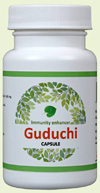
Guduchi
Guduchi, the Sanskrit name, means one which protects the entire body. In Hindi, the plant is commonly known as Giloe, which is a Hindu mythological term that refers to the heavenly elixir that has saved celestial beings from old age and kept them eternally young.
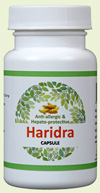
Haridra
Haridra has been used in Asia for thousands of years and is a major part of Ayurvedic and Siddha medicine. In India, turmeric has been used as a remedy for stomach and liver ailments, as well as topically to heal sores, basically for its supposed antimicrobial property.
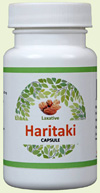
Haritaki
Haritaki is held in high esteem in Ayurveda for its properties to prevent and cure diseases. It has enjoyed the prime place among medicinal herbs in India since ancient times. It is called the ‘King of Medicines’ and is always listed first in Ayurveda because of its extraordinary therapeutic benefits.
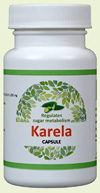
Karela
Karela is known as Bitter melon or Bitter gourd originated on the Indian subcontinent, and was introduced into China in the 14th century. In Southern India, it is used in the dish Pachadi ,which is considered a medicinal food for diabetics.
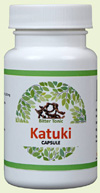
Katuki
Picrorhiza kurroa commonly called Katuki / Kutki is a well-known herb in the Ayurvedic system of medicine and has traditionally been used to treat disorders of the liver and upper respiratory tract.
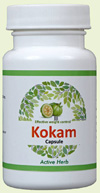
Kokam
Kokam is indigenous to the Western Ghats region of India located along the western coast of the country. It is used as a staple souring agent typically in Goan cuisine, Maharashtra and Karnataka. also used in cuisine from Gujarat, where it is frequently used to add flavour and tartness to dal (lentil soup) for flavour balance.
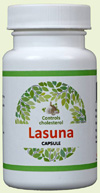
Lasuna
Lasuna, commonly known as garlic, is a species in the onion genus with a history of human use of over 7,000 years. Garlic is native to central Asia. It was known to Ancient Egyptians, and has been used for both culinary and medicinal purposes.
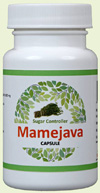
Mamejava
Enicostemma littorale commonly known as ‘Nagajihva’ or ‘Mamejava’ in Ayurveda has been used in folk medicine for the treatment of diabetes mellitus in western and southern India (Gupta et al., 1962).

Neem
Neem trees have been used in India for over two millennia for their medicinal properties. Neem has been used in the Ayurvedic tradition for thousands of years for maintaining health.
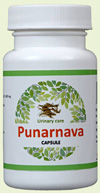
Punarnava
Punarnava is the ayurvedic herb presented by our Mother Nature. The Latin name of Punarnava is Boerhaavia diffusa and its English name is Spreading hogweed. It is extensively found in India. Punarnava is the word derived from two different words “punar”, which means “again” and “nava” means new”.
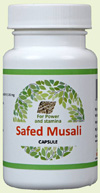
Safed Musali
India is bestowed with a wealth of herbal plants, most of which have been used in Ayurveda, Unani systems of medicines, and by tribal healers. Safed musali holds an important position in Indian herbal medicine.
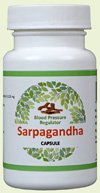
Sarpagandha
Sarpagandha is a traditional Indian herb and known as Indian snakeroot. This herbal plant is known as the chandrika - in Sanskrit, and literally translated as the "moonshine plant" –It serves as a sedative and hypnotic drug for the treatment of insanity linked to the lunar phases, or what is called "moon disease".
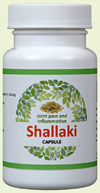
Shallaki
In Ayurvedic medicine Boswellia serrata is a plant that referred to in Sanskrit as ‘Shallaki’ has been used for hundreds of years for the attempted treatment of rheumatoid arthritis, osteoarthritis, gout, joint pain, skeletal muscle pain and back pain.
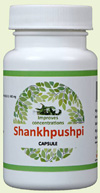
Shankhpushpi
Shankhapushpi is widely used in Ayurvedic medicine as a brain tonic ,memory enhancer and to promote higher intelligence. In a more physical sense, the herb can help to eliminate hypertension, anxiety, asthma, stress-related disorders, epilepsy, insomnia and numerous neurodegenerative diseases including dementia and Alzheimer’s disease.
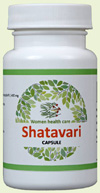
Shatavari
The name "Shatavari" means "curer of a hundred diseases" (shat: "hundred"; vari: "curer"). Asparagus racemosus (Shatavari) is recommended in Ayurvedic texts for the prevention and treatment of hyper acidity, gastric ulcers and dyspepsia. It regulates hormonal secretion and acts as a galactogogue in nursing women.
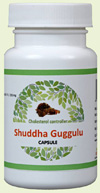
Shuddha Guggulu
According to Sanskrit definition, the word ‘Guggulu’ means ‘one that protects against diseases’. Guggulu has been used for over 3000 years and is described all of the classical Ayurvedic texts, including Sushruta Samhita. In this book it is recommended for the treatment of rheumatic pain and obesity.
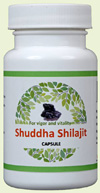
Shuddha Shilajit
Shilajit has been described as 'mineral oil', 'stone oil' or 'rock sweat', as it seeps from cracks in mountains, mostly due to the warmth of the sun. Shilajit comes from the Sanskrit compound word shilajatu meaning "rock-invincible", which is the regular Ayurveda term.
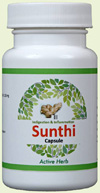
Sunthi
In Indian cuisine, Sunthi is a key ingredient, especially in thicker gravies, as well as in many other dishes, both vegetarian and meat-based. Sunthi also has a role in traditional Ayurvedic medicine. It is an ingredient in traditional Indian drinks, both cold and hot, including spiced Masala chai(Tea).
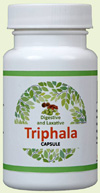
Triphala
The word Triphala is formed by combining two Sanskrit words. Tri means three and phala means fruits. Triphala, is an Ayurveda herbal rasayana formula consisting of equal parts of three myrobalans: Amalaki (Emblica officinalis), Bibhitaki (Terminalia bellirica), and Haritaki (Terminalia chebula).
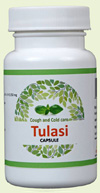
Tulasi
Tulasi has been used for thousands of years in Ayurveda for its diverse healing properties. Marked by its strong aroma and astringent taste, it is regarded in Ayurveda as a kind of "elixir of life" and believed to promote longevity. Tulasi is mentioned in the Charaka Samhita, an ancient Ayurvedic text as an adaptogen.




